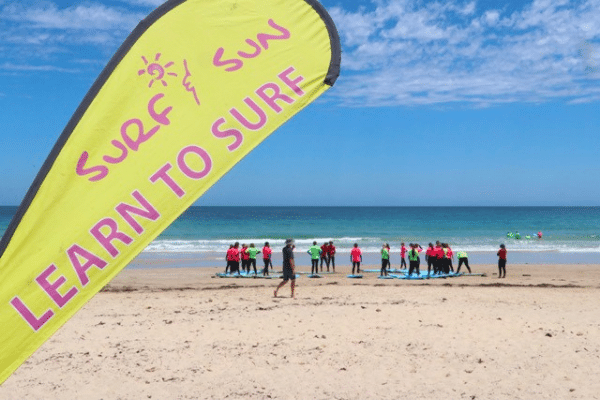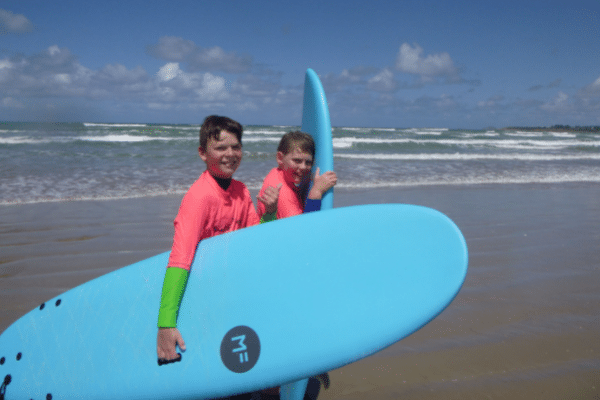
15 Jan Surf safety
As summer is now here, we are all looking for a beach holiday and looking forward to spending more time in the waves. Here are some great tips on how to stay safe in the surf.

1) Don’t surf alone. Anyone new to surfing needs to have a surf buddy, a companion onshore, or at the very least, surfing at a spot where there are others in the water to ensure your safety as you surf.

If you are unsure about surfing conditions then you should ask yourself: Can I still make it back to shore in case my leg-rope breaks and I lose my board?
2) Swim and stay between flags. Many surf schools use flags on the beach to signify where they are running lessons. If you are at a patrolled beach, you will see flags that indicate that the beach conditions have been checked and there are lifeguards monitoring the beach. So make sure to stay between the red and yellow flags if you are swimming at a patrolled beach.
If you are surfing, you cannot use hard surfboards in between the red and yellow flags, but a soft board is still considered okay.
3) Use the right equipment. Make sure you have the right board for the conditions. Foam is your friend. A wetsuit will also offer you great protection from the sun, it will keep you warm in the water and also gives you buoyancy.
4) Take care of yourself on the shore and in the water. Use sunscreen and keep hydrated. Dehydration and heat stroke are silent enemies. They can be especially sneaky in cooler weather. If you are feeling cold, it is better to rest and have some sun for a while, or if it is a hot or humid day, then stand in the shade and drink some water.
Avoid cramps by doing the usual stretching exercises, and by not eating at least half an hour prior to surfing.
A word about falling off a board: Keep your arms on top of your head if you fall, as your surfboard could hit you!
5) Be smart about rip currents. This tip, aside from those above, is a must in surfing lessons in any area. Awareness about rip currents is part and parcel of skilled surfing. How do you get out of a rip? Always swim across a current and let it draw you as far out as it continues (swimming against it always never works). Once the current wears out, just paddle around the danger zone and head back to the shore.
6) Understand surfing lingo and rules As in the case of many sports, surfing has rules (some unwritten) to ensure many get to surf as safely as possible. There are many important things to keep in mind and one of the main rules in the surfing world is “not dropping in.” This means you do not paddle for or take off on a wave that someone else is already on.
Surfing also has its own terminologies. Check out this post on surf and lingo https://www.surfandsun.com.au/blog/2013/surf-lingo.php
Perhaps the best tip to end this list of tips on surf safety is to give respect and space to other surfers when in the water. You are there with them to share the ocean and have fun with the waves. Be happy, friendly, and courteous in the water at all times.

